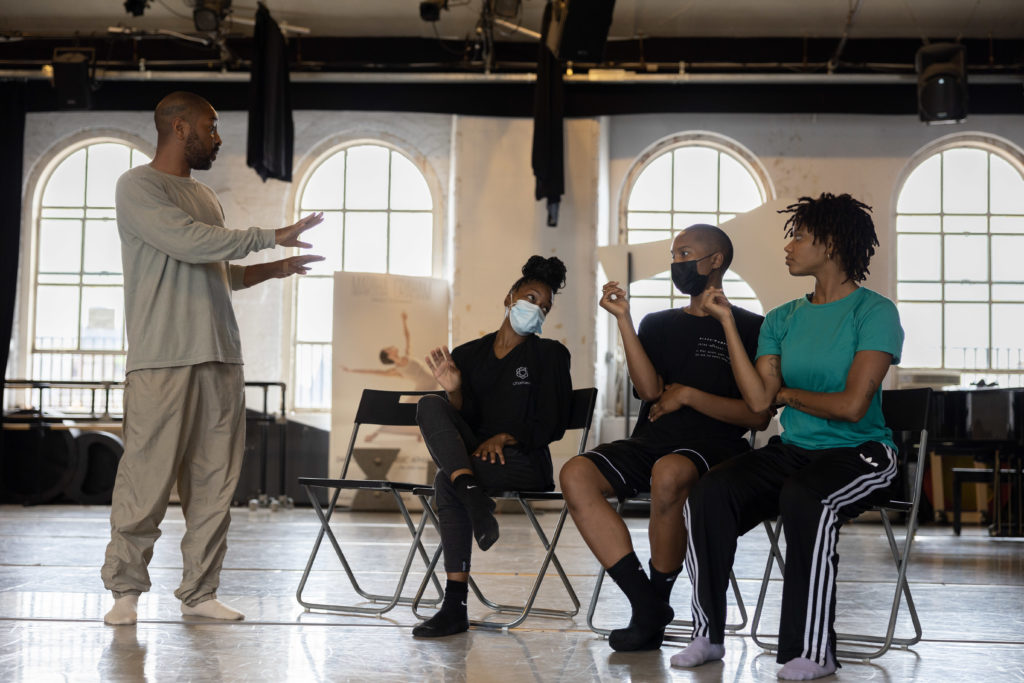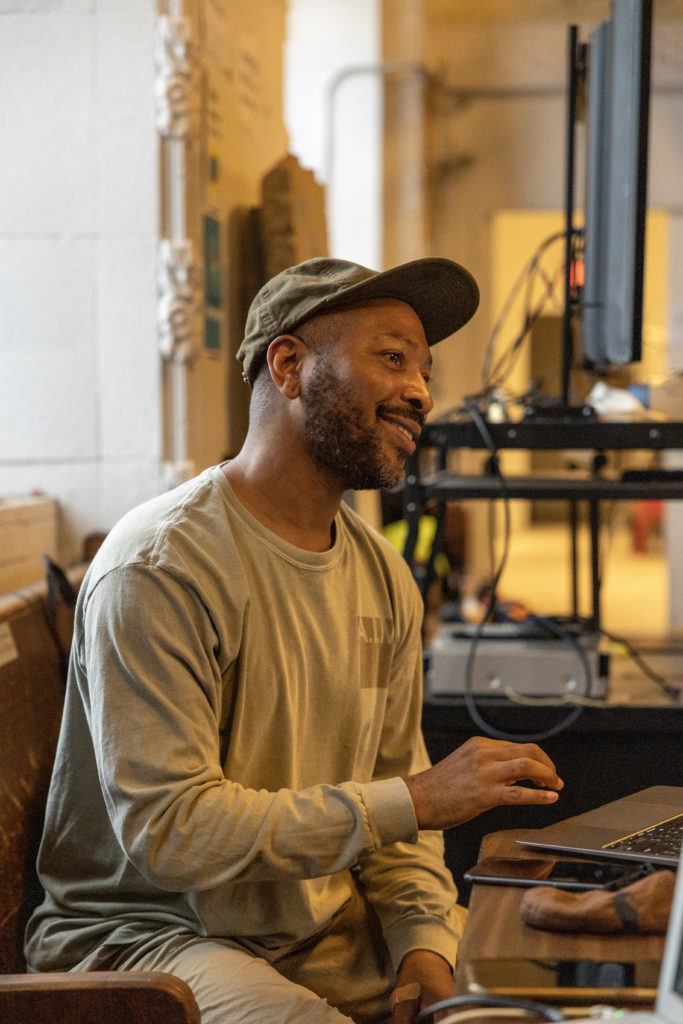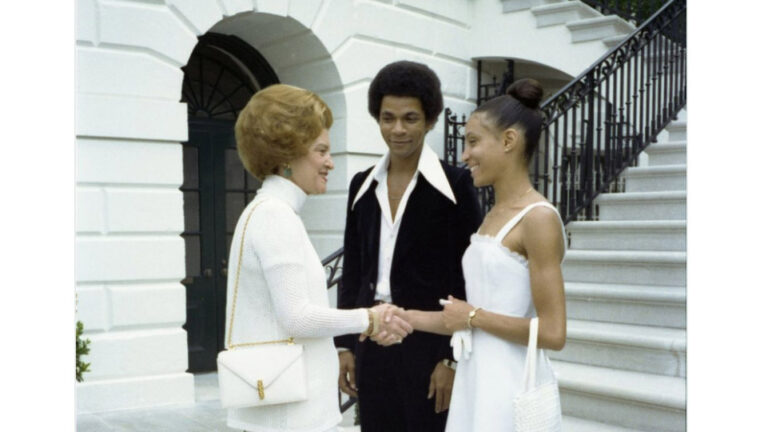
For choreographer Kyle Abraham, musicality consists of four key factors: intentionality, authenticity, trust and freedom.
Though he played many instruments growing up—piano, French horn, cello and a “sad attempt” at the violin, he attributes his approach to musicality mostly to rave culture and social dances. In fact, the artistic director of A.I.M says he has gravitated towards drum and bass, jungle and soulful house genres in the rave scene. “The thing that I like about drum and bass and soulful house is that there are so many different layers that I could dance and respond to. The beats per meter are really fast when it comes to drum and bass and jungle, but I could dance to the bass if I didn’t want to move super-quick. I could also dance to the voices if there was singing involved, or I could dance to the melody.”
These early experiences with rave culture music shaped Abraham’s artistry, especially when it comes to improvisation: “I was really moving as a form of self-expression in a way that wasn’t about anyone’s approval or anyone telling me what to. I just danced in a way that is, very much to me, what the heart of improvisation is.”
Abraham describes that freedom as coming from listening to the music deeply and reacting authentically. “There are a lot of dancers who love to count,” he says, “but counting does not make you musical, it just makes you good with numbers. Are you listening to the music or are you busy counting?”

Along with freedom and authenticity, Abraham also stresses the importance of trust and intention when it comes to musicality. In the studio, he directs his dancers to move in conversation with the music, the choreography and the other dancers in the room. Doing so requires a high level of trust and understanding behind the intention of the choreography. If you’re constantly trying show off “fresh and new” movement, Abraham explains that you’ve probably lost sight of the intention behind the choreography.
“Most of the time it’s more important to move with purpose than it is to get your leg at a certain height or do an extra rotation of a turn. If we’re not [dancing] in conversation in a piece where we really need to understand the trust, intentionality and direction behind the choreography, you might totally have missed the mark while trying to just be fabulous.”
Abraham carries the same level of intention over to his musical choices. Occasionally, he gets to collaborate with a composer on a new composition. While waiting for the score, he tries to not play the same song over and over during rehearsal; “I don’t want to play it [the song that inspired the score] because I’m going to fall in love with it and compare it constantly to the new music that I’m being given. They are not supposed to be one and the same.”

No matter how Abraham starts a new choreographic process (no two projects start the same way), he eventually creates a playlist specifically for the project. “Once I know what the musical world is, I create a playlist. I might keep shifting it up, but I will spend months, sometimes a year or longer, listening to the music in [a specific] order before I’ve gotten to the place of choreographing. Sometimes, it just keeps building.”
In the case of When We Fell, a dance film choreographed for New York City Ballet, he focused the playlist around specific instrumentation. After deliberating on what songs felt right together, the musical score became “its own kind of sonic story, separate from the moving narrative that [he] was interested in.”
When building the playlist and score for the work, Abraham researches the history of each song and the artists. If songs span different genres, what connects them? If it’s a popular song, what feelings does it invoke, and how does that serve the work?
Here, Abraham put together a playlist of songs he listens to whenever he needs a confidence boost.
“Over,” by Drake: “It’s a song that lifts me up and hypes me up to perform. As someone who deals with stage fright, playing a song like ‘Over’ gives me the courage to push through and believe in myself.”
“Walk Alone,” by The Roots (ft. Truck North, P.O.R.N. & Dice Raw): “This song speaks to me on many levels. I know that I am responsible for my successes and failures alike. This is one of those songs I play when I have to get my work done when everyone around me might be out at a party.”
“Push Thru” by Talib Kweli (ft. Curren$y, Kendrick Lamar and Glen Reynolds): “Aside from being a song featuring two of my favorite rappers of all time, this song has a different energy than most of the songs I vibe to in moments where I need a pick-me-up. The chorus is made up of lyrics that get me up and working through tough times. Lyrics like ‘I rise as day breaks’ or ‘I fight the good fight, even on the bad days’ are just a few examples of mantras I use to lead me when I feel like I’m in my more insecure creative and performance spaces.”





